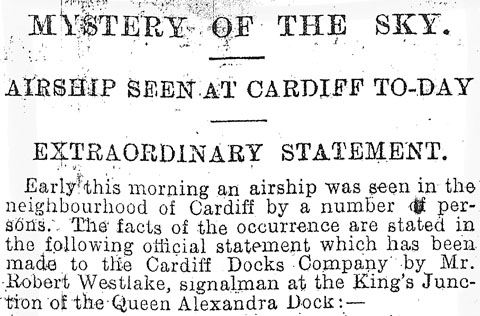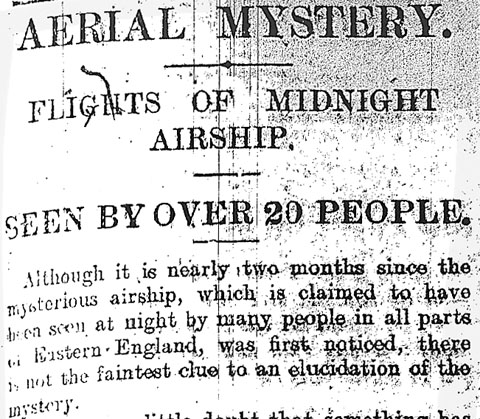Wednesday, 19 May 1909
Only the Globe carries (p. 4) phantom airship stories today (out of my sample, at least), but it has two, and they head the column rather being buried down the page. The first is from Cardiff in Wales, where a number of dock workers saw an airship in the early hours of this morning, and […]




